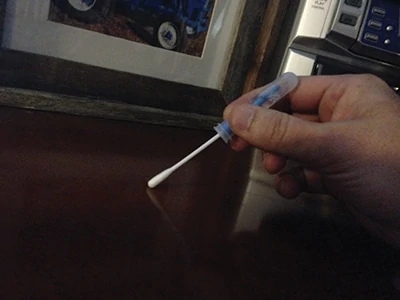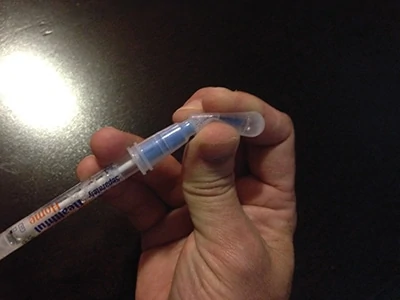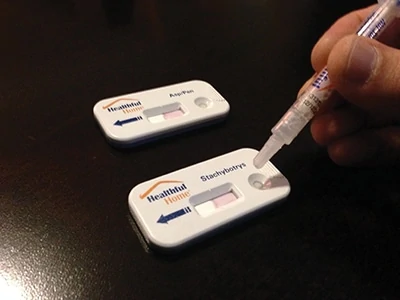You can expect mold and mildew outside your home because of the natural damp conditions of the outdoors. Mold and mildew inside the home is a different problem, because the inside of your home shouldn’t remain damp.
The presence of moisture is the biggest contributor to mold growth, and to fight the infestation you should conduct a room-by-room assessment of the house to identify problem areas. The moisture can come from condensation due to poor ventilation (attic), from a water leak (around bathrooms), or from outdoor intrusion (foundation walls).
Detection
Mold and mildew in a home are not always easy to detect if the problem exists within attics or is hidden within walls. If you suspect your indoor air quality is hindered by hidden mold, you can conduct your own DIY test to detect a problem.
The EHT staff recently conducted the Healthful Home 5-Minute Mold Test in a finished basement that had suffered some previous flooding problems. The air seemed fine in the room, but the old moisture issues suggested that if there were to be a mold problem in the house then it was likely to occur in this room.
The test is easy to accomplish. Simply use one of the cotton swabs included with the kit to sample surface dust in the room. Soak the swab tip in the “rinse buffer” liquid (included) and then drip five drops of the liquid onto the two test strips that come with the kit. One strip is labeled Asp/Pen (Aspergillus and/or Penicillium) and the other is labeled Stachybortrys.
Test results show in as little as 5 minutes, and much like a pregnancy test you’ll either see one line (negative results) or two lines (positive).
Luckily, our home tested negative. If the test is positive, however, it does not necessarily mean you have a serious problem but that you should consider consulting a professional indoor air quality inspector or a remediation service professional. You can also have an optional laboratory analysis of your test results conducted for an additional fee.
Fighting the Mold you Find
If you discover mold on the home’s interior, the first step in solving the problem is to eliminate the source of moisture—whatever that may be. Otherwise, any mold or mildew you clean is likely to return.
For minor problems you may be able to clean the surface of the materials with bleach or an antimicrobial cleaner. For major problems, remove materials that cannot be thoroughly cleaned of mold and mildew, like insulation, carpeting or drywall. Use your antimicrobial cleaner to clean the surrounding area as well as the places where you actually see mold and mildew, to make sure you remove all traces of the substances.
Finally, replace the removed building materials with new, mold-free materials.
Learn more about the 5-minute Mold Test at myhealthfulhome.com.
— M. Weber






